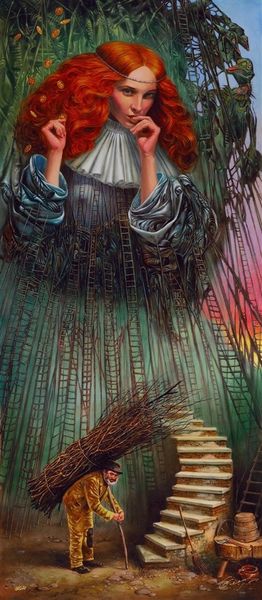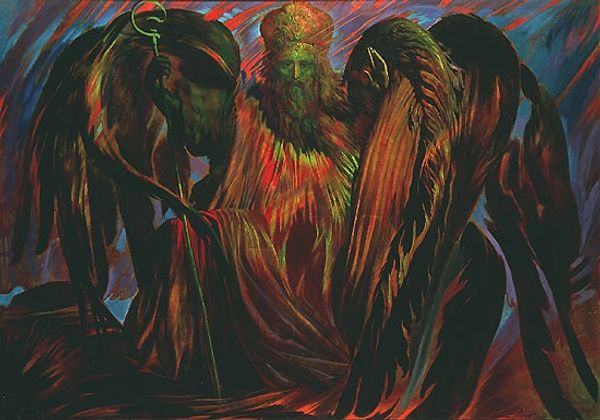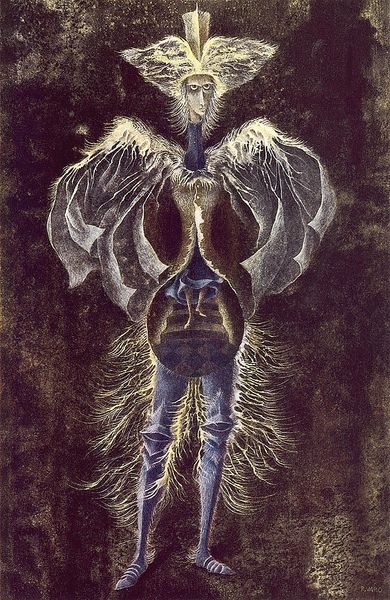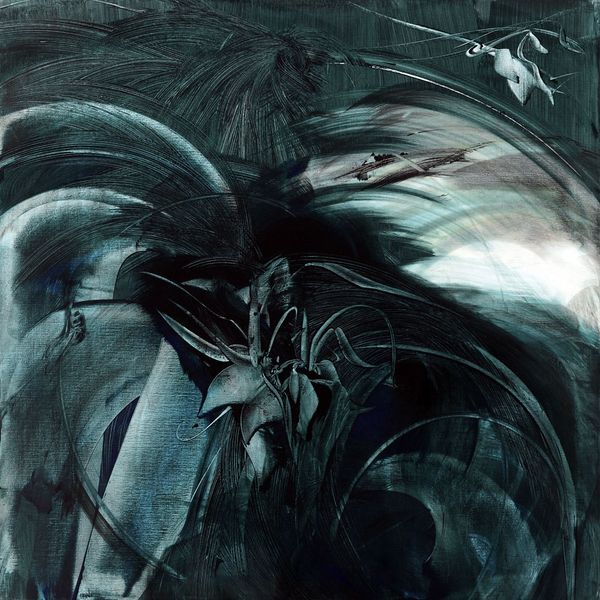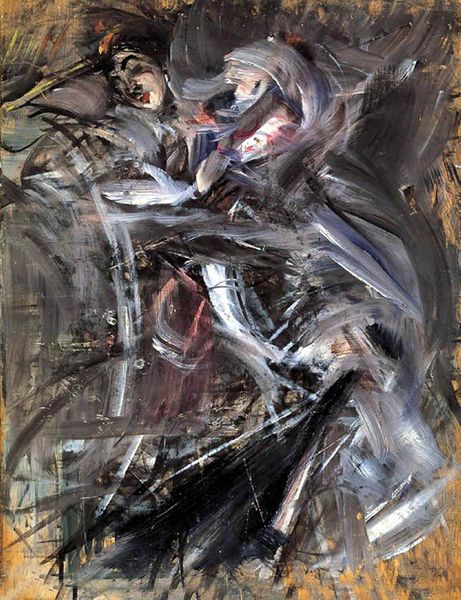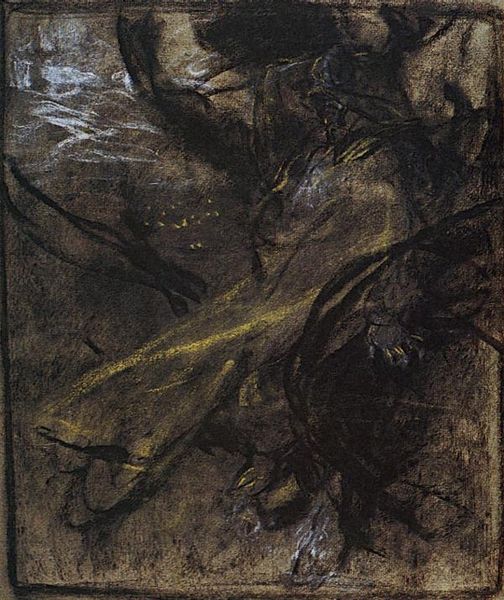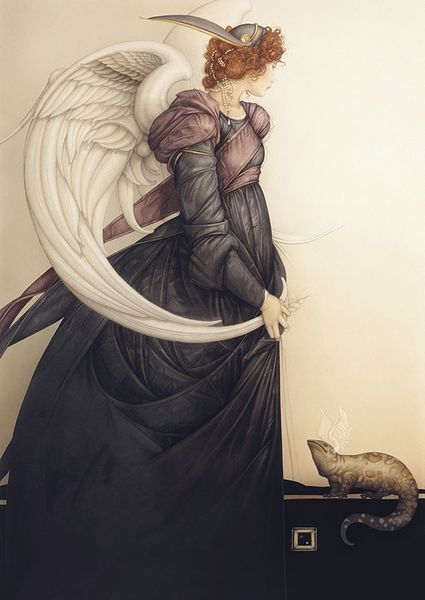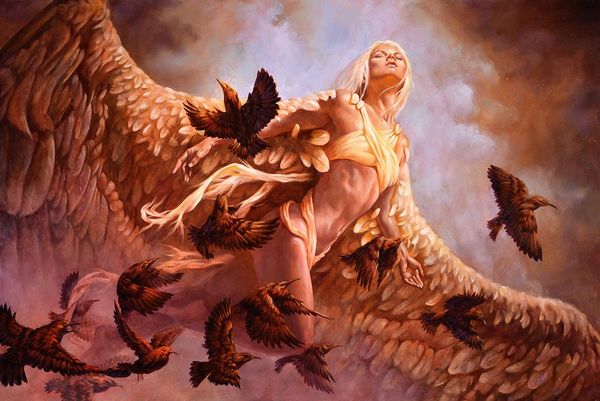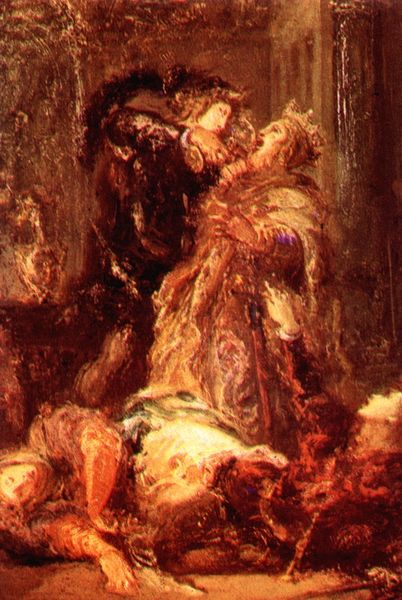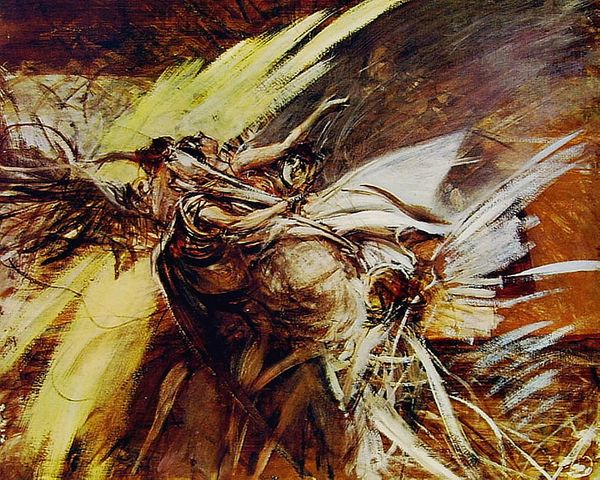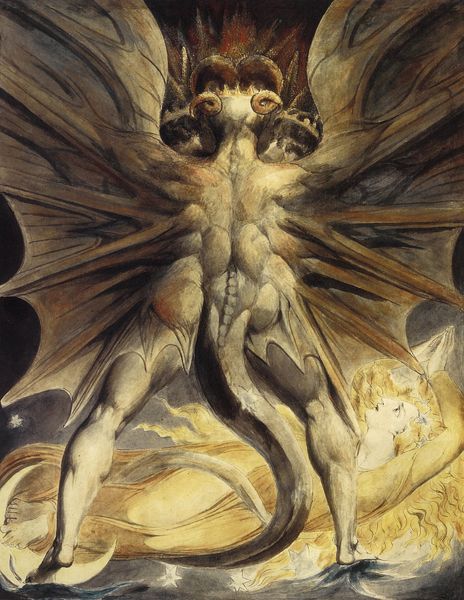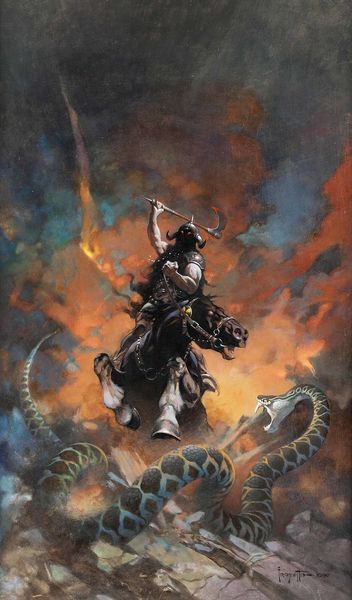
Dimensions: 228 x 118 cm
Copyright: Public domain
Editor: This is "Moving to the Bois de Boulogne" painted by Giovanni Boldini in 1909, rendered with oil paint. It’s a really dramatic piece. What immediately strikes me is the use of black. The figures almost blend into the background. What compositional elements stand out to you in this piece? Curator: The formal elements in "Moving to the Bois de Boulogne" orchestrate a visually compelling, if unstable, experience. Notice the dominance of the vertical, assertive strokes which define the couple, offset by softer curves in the woman’s attire. Observe how this contrast echoes in the rendering of the figures themselves. Is there tension for you, too, between foreground and background, created by their almost equal darkness? Editor: I see that now! It almost feels like they are emerging from or dissolving into the scenery. So, how does Boldini’s technique enhance this sense of dynamic motion? Curator: Look at the deliberate blurring of edges, especially in the woman's dress and the background foliage. The absence of sharply defined lines contributes to the feeling of movement and immediacy. Do you think that the limited palette of primarily dark tones adds or subtracts to the overall emotional effect? Editor: I think the limited colors make it moodier and adds a layer of mystery, almost as if obscuring the details intensifies our focus on what *is* visible. I guess the essence lies in how the visual form conveys feeling rather than explicitly portraying it. Curator: Precisely. Understanding how form shapes content leads us to a richer engagement with the artwork. I am struck, too, by the effect the upward and outward sweeping lines achieve, especially within a fairly limited plane. What an intriguing formal paradox.
Comments
No comments
Be the first to comment and join the conversation on the ultimate creative platform.
